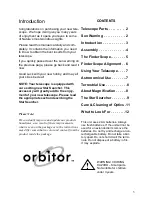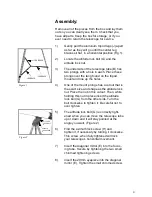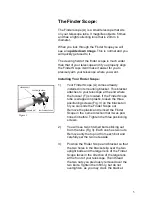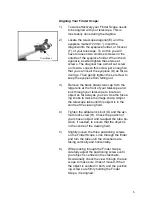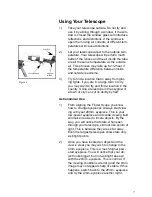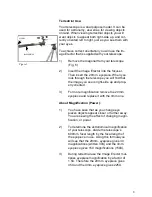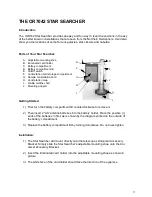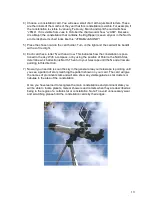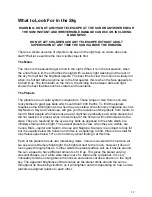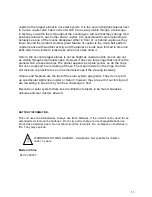
10
4) Choose a constellation card. You will see a small chart with a jumble of letters. These
are the initials of the months of the year that this constellation is visible. For example, if
the constellation is visible in January, February, March and April the card will show
“JFMA”. If it is visible from June to October the chart would show. “JJASO”. Because
Ursa Major (the constellation that contains the Big Dipper) is seen all year in the North-
ern Hemisphere its chart looks like this; “JFMAMJJASOND”!
5) Place the chosen card in the card holder. Turn on the light and the card will be backlit
with a soft red light.
6) Each card has a letter ‘N’ with an arrow. This indicates how the constellation is posi-
tioned in the sky. With a compass, or by using the position of Polaris, the North Star,
determine which direction is North. Then turn your telescope until the N and arrow are
pointing in this direction.
7) Now all you need do is scan the sky in the general area your telescope is pointing until
you see a pattern of stars matching the pattern shown on your card. The card will give
the names of prominent stars and will also show any visible galaxies, star clusters or
nebulae in the area of the constellation
Once you have learned to recognize the main constellations and prominent stars you
will be able to locate planets, meteor showers and comets when they are described as
being in the region of a certain star or constellation. Note: To avoid unnecessary wear
and scratching please hold the constellation cards by their edges.



